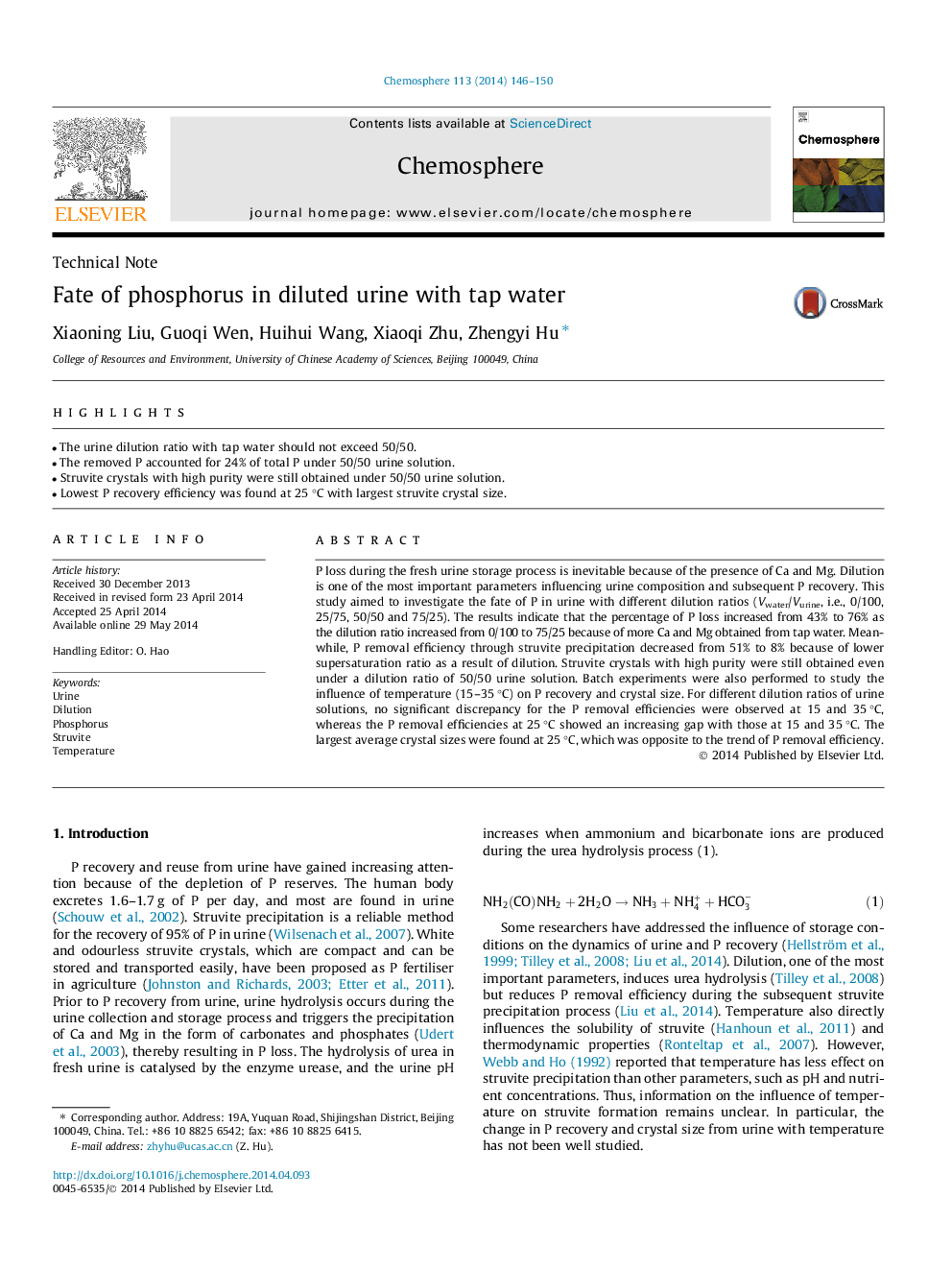| Article ID | Journal | Published Year | Pages | File Type |
|---|---|---|---|---|
| 4408770 | Chemosphere | 2014 | 5 Pages |
•The urine dilution ratio with tap water should not exceed 50/50.•The removed P accounted for 24% of total P under 50/50 urine solution.•Struvite crystals with high purity were still obtained under 50/50 urine solution.•Lowest P recovery efficiency was found at 25 °C with largest struvite crystal size.
P loss during the fresh urine storage process is inevitable because of the presence of Ca and Mg. Dilution is one of the most important parameters influencing urine composition and subsequent P recovery. This study aimed to investigate the fate of P in urine with different dilution ratios (Vwater/Vurine, i.e., 0/100, 25/75, 50/50 and 75/25). The results indicate that the percentage of P loss increased from 43% to 76% as the dilution ratio increased from 0/100 to 75/25 because of more Ca and Mg obtained from tap water. Meanwhile, P removal efficiency through struvite precipitation decreased from 51% to 8% because of lower supersaturation ratio as a result of dilution. Struvite crystals with high purity were still obtained even under a dilution ratio of 50/50 urine solution. Batch experiments were also performed to study the influence of temperature (15–35 °C) on P recovery and crystal size. For different dilution ratios of urine solutions, no significant discrepancy for the P removal efficiencies were observed at 15 and 35 °C, whereas the P removal efficiencies at 25 °C showed an increasing gap with those at 15 and 35 °C. The largest average crystal sizes were found at 25 °C, which was opposite to the trend of P removal efficiency.
